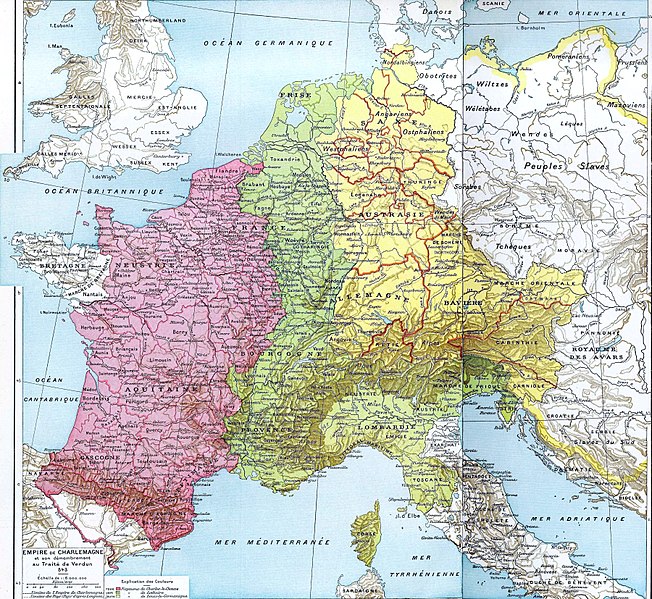
The Carolingian Empire (800–924) was the final stage in the history of theearly medieval realm of the Franks, ruled by the Carolingian dynasty. The size of the empire at its zenith around 800 was 1,112,000 square kilometres (429,000 sq mi), with a population of between 10 and 20 million people.[1]
With its division in 843, it also represents the earliest stage in the history of the Kingdom of France and the Kingdom of Germany, which in the High Middle Ages would emerge as the powerful monarchies of continental Europe, Capetian France and the Holy Roman Empire, and by extension the predecessor of the modern nations of France and Germany. The beginning of the Carolingian era is marked by the coronation of Charlemagne, or Charles the Great by Pope Leo III at Christmas of the year 800, and its end with the death of Charles the Fat in 888,[2] although kings of Italy continued to claim the nominal title of Emperor until 924.
Because Charlemagne and his ancestors had been rulers of the Frankish realm earlier (his grandfather Charles Martel had essentially founded the empire during his lifetime, and his father, Pepin the Short, was the first King of the Franks), the coronation did not actually constitute a new empire. Most historians prefer to use the term "Frankish Kingdoms" or "Frankish Realm" to refer to the area covering parts of today's Germany and France from the 5th to the 9th century.
According to the American Heritage Dictionary, the term "Carolingian" comes from the French terms "Carolingien" and "Carlovingien", probably ablend of Carolus (Latin for Charles) and "Mérovingien"
No comments:
Post a Comment